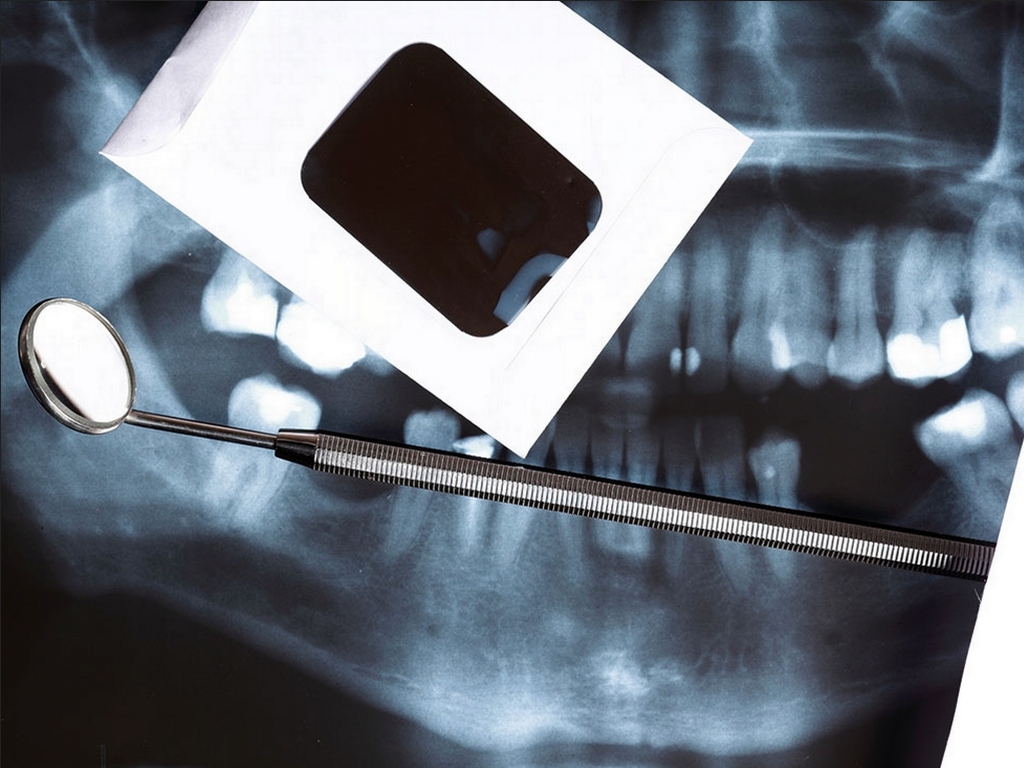Cleaning and flossing teeth is a no-brainer for health, but how else can we care for our pearly whites, and when do we need to call a dentist? Check out our all-you-need-to-know guide on dental care here…

Dental Care for Babies & Toddlers
For parents, the emergence of teeth is one of the big issues in the development of babies. This is usually accompanied by numerous questions that are easily answered – but sometimes an answer is needed at 2am, right? Here’s a quick guide for babies, toddlers and preschoolers aged up to five years from dentists in Asia.
When should I start brushing my baby’s teeth? Should I use toothpaste?
Children’s toothpaste containing fluoride should be used with a toothbrush designed for babies as soon as the first teeth emerge.
What product do you recommend for teething?
A cold washcloth or chilled (not frozen) teething ring can be soothing on a baby’s gum. Massaging the gums with a finger or washcloth might give some relief by pressure, and sometimes medication such as paracetamol can be considered.
When do you recommend the first check-up?
A child’s first visit to the dentist should occur as soon as the first tooth erupts or, at the very latest, by the first birthday. The first dental check-up identifies any issues with respect to dental growth and development. The dentist will also advise parents on nutrition and home dental care.
Do parents need to worry about thumb-sucking? Does this affect teeth?
Thumb, finger and pacifier sucking are common in babies and toddlers, but these habits should cease naturally between two and four years of age. If the habit persists, it may affect a child’s teeth alignment, bite or the growth of the jaw. Chat with your dentist if you have any difficulty persuading your children to say goodbye to thumb sucking or pacifiers.
Is grinding bad for teeth? Does this stop naturally?
Over a long period of time, it may lead to accelerated wear. There is no single way to totally stop someone grinding their teeth at night, but a dental splint can reduce excessive teeth wear and relieve discomfort.

Dental Care for Children (5 to 12 years)
It’s a busy time for children when they start losing baby teeth and gaining adult teeth; it’s also a time when parents need to be vigilant about brushing and establishing good oral hygiene habits.
When do children start losing baby teeth?
The process of losing baby teeth and replacing them with adult teeth carries on from age six until age 12. The lower front teeth are generally the first to fall out.
Should I be worried about the position of my children’s milk teeth?
Often the position of milk teeth and the alignment of the child’s jaw give dentists clues to the future positioning of their adult teeth.
How long do I need to continue brushing my kids’ teeth?
Adults should help with teeth cleaning until children are about age eight, and sometimes even 10. Kids do not have the dexterity to brush and floss their teeth thoroughly.
What if an adult tooth is pushing down but the baby tooth has not fallen out?
If the baby tooth is firm, then it will require extraction to allow the emerging adult tooth to take its place. A displaced adult lower incisor quite often repositions by itself when there is sufficient space.
Should my kids floss their teeth?
As soon as tooth-to-tooth contact occurs, teach your child to floss every night before bedtime. Flossing prevents cavities between teeth and makes a big difference in small jaws where teeth are tightly packed. Parents may have to assist or supervise children under 10 with flossing.
What are the benefits of fluoride?
Fluoride works in two ways: when consumed it is incorporated into the developing adult teeth, which emerge strong and resistant to decay; secondly, fluoride in toothpaste helps prevent cavities. In Singapore, drinking fluoridated tap water is the ideal way to benefit from fluoride.
Tell us about fissure sealant.
The grooves on the chewing surfaces of molars tend to trap food. Fissure sealant is a hard, protective coating that covers these grooves and pits to prevent decay from starting. Ideally, it’s placed on the first permanent molars as soon as possible, generally around seven years of age.
Orthodontic Care
Expensive orthodontic work can be minimised or even prevented by treatment at an early age, before the jaw has fully developed. What’s more, orthodontic problems often run in families.
At what age should a child be seen by an orthodontist?
By age seven, enough permanent teeth will have grown and sufficient jaw growth will have occurred for the orthodontist to identify current problems, anticipate future problems and alleviate parental concerns. The first permanent molars and incisors usually emerge by age seven, and cross-bites, crowding and any potentially injury-prone teeth that stick out can be evaluated.
Other than crooked teeth, what signs would indicate that a child should see an orthodontist?
The numerous signs can include early or late loss of baby teeth, difficulty in chewing or biting, teeth out of alignment, a jaw that shifts sideways when closing, thumb- or finger-sucking, “mouth breathing”, and jaws and teeth that are out of proportion to the rest of the face.
What is the average age for orthodontic treatment?
Orthodontic treatment is generally divided into two phases. The first phase is usually for children between seven and 10 years old, when there is still a mixture of baby and adult teeth. The second is for children aged from 10 to 12 years and up, and into adulthood.
How long are braces typically needed?
The first phase of treatment usually lasts six to 12 months and the second phase is normally 18 to 24 months. Treatment time depends on the patient’s growth and response to orthodontic treatment, and his or her level of cooperation. The orthodontist has specific treatment goals in mind, and will usually continue treatment until these goals are achieved.
Is it safe to play active physical sports with braces?
Yes, but both children and adults should wear protective mouth guards. An orthodontist can recommend specific mouth guards suitable for different sports.

Dental Care for Adults
Crowns, root canal therapy and dental health
What are the most common tooth problems for adults?
1. Gum issues. Bleeding gums and receding gums are common. Bleeding gums can be healed by following good oral hygiene and regularly visiting the dentist for cleaning and check-ups. Receding gums contribute to the next problem, tooth sensitivity.
2. Tooth sensitivity. While desensitising toothpastes can help, dentists may be able to cover the exposed root surface, which can decrease the sensitivity.
3. Tooth loss. This can occur due to gum problems, dental caries or tooth fracture.
4. Adapting to replacement teeth following tooth loss.
In simple terms, what is root canal therapy?
As we age, the nerve in a tooth can become inflamed or infected, causing a toothache. This is not the usual toothache that comes and goes; it usually manifests as a constant pain and sensitivity, and can keep one awake at night. Root canal therapy can relieve the pain and maintain the tooth.
This procedure involves removing the nerve tissue inside the tooth, cleaning the inside of the tooth and filling it with a rubber-based material. The entire process is done under local anaesthesia and causes little discomfort. Patients are much happier after the root canal treatment as their pain is relieved. It’s not a procedure to be fear.
What is a dental implant and why would I need one?
An implant is a titanium screw that is placed into your jawbone to replace a missing tooth root. A special crown is then made and attached to the implant. Implants are used when teeth are missing, and they essentially replace the missing root; the crown replaces the missing tooth.
When are crowns needed, and what is the procedure for restoring the tooth structure?
A crown is needed after root canal treatment or when a large amount of tooth structure is missing, either due to caries or previous restorations. The tooth is trimmed and a mould of the tooth is made, and based on this mould, a customised tooth or crown is made from materials such as cast metal, porcelain or a combination of the two. The crown encircles the remaining tooth structure and protects it from fracture.
What is the key to keeping our teeth in good condition as we age?
The key to maintaining healthy teeth is a good oral care programme at home, and regular visits to the dentist. Besides the regular check-up where dentists sometime detect developing problems, the dentist can also recommend a maintenance programme for each individual’s needs.

Discolouration and whitening
While teeth can stay relatively healthy with the right kind of care, a decline in their appearance is an issue most people experience with ageing.
What’s the best way of tackling yellowing teeth?
Teeth can become discoloured over time by cigarette smoke, coffee and tea, sugar, food colouring, plaque and medication; all these are possible culprits. One remedy is teeth-whitening, which uses a chemical agent or bleach to remove the stains. A laser can be used to speed up the reaction. Laser tooth-whitening is popular and generally very successful. Veneers, which are wafer-thin shells made from resin or porcelain that cover the front surface of the teeth, can also be considered.
Is whitening damaging to the teeth?
No, it does not damage teeth and is actually the least invasive option for lightening tooth colour. Expect sensitivity for a day or two after bleaching, but with modern laser options, the sensitivity is considerably reduced.
How does at-home treatment rate against in-office whitening?
Home treatment kits contain a whitening gel with chemicals in lower concentrations. This means it takes longer to achieve the same effect – a week, rather than an hour.
What is the cost? How long does it last?
Home bleaching kits cost are most cost effective, whereas in-office procedures offer the assurance that the treatment is performed correctly.
What is a smile makeover?
A smile is more than just a physical movement of muscles or the flashing of teeth, it’s a powerful emotional gesture, and an integral part of our persona.
A smile makeover can be as simple as teeth whitening, or it can involve fabricating porcelain veneers or a crown in the desired size, shape and colour. It might even entail jaw surgery and the placement of dental implants, which can be used to rebuild a patient’s facial form and profile. If a uniform result is desired, porcelain veneers or crowns will be made to fit over the surface of the prepared teeth.
The latest technology uses a computer linked to a machine to design and make the porcelain veneer or crown, which can be fabricated in different shades to match the surrounding teeth.
Missing teeth can be replaced using titanium implants placed directly into the jaw and used to support new cosmetic crowns. Even if the teeth were lost many years ago, the bone can be regenerated over time and implants placed successfully.
Toothy Trivia
- One third of a tooth is under the gum.
- Humans form two sets of teeth in their lifetime. Baby teeth number 20; adult teeth 32.
- Teeth are covered in enamel, the hardest part of the body.
- Sharks grow a new set of teeth every two weeks to replace worn ones.
- Tooth decay is the most common global disease.
- Tooth-brushing has been practised for thousands of years. Ancient Egyptians, Greeks, Romans and Indians cleaned their teeth with twigs.
- The first mass-produced toothbrush was developed in England in 1780.
- Saliva is 99.5-percent water. It’s essential for breaking down food trapped in oral crevices and protecting teeth from decay.
- The jawbone is the hardest bone in the human body.
- Dentists recommend brushing twice daily and visiting them twice a year.
Like this? See more in our Health & Fitness section:





